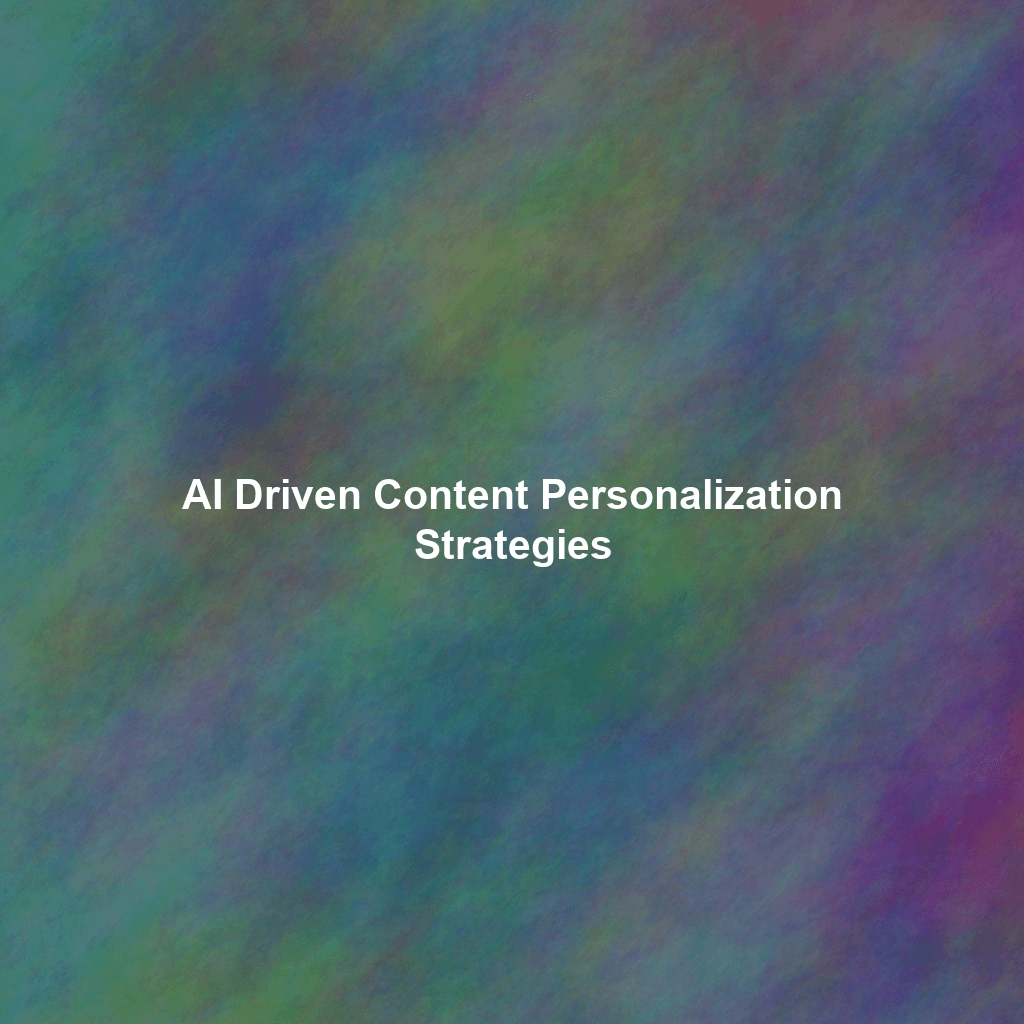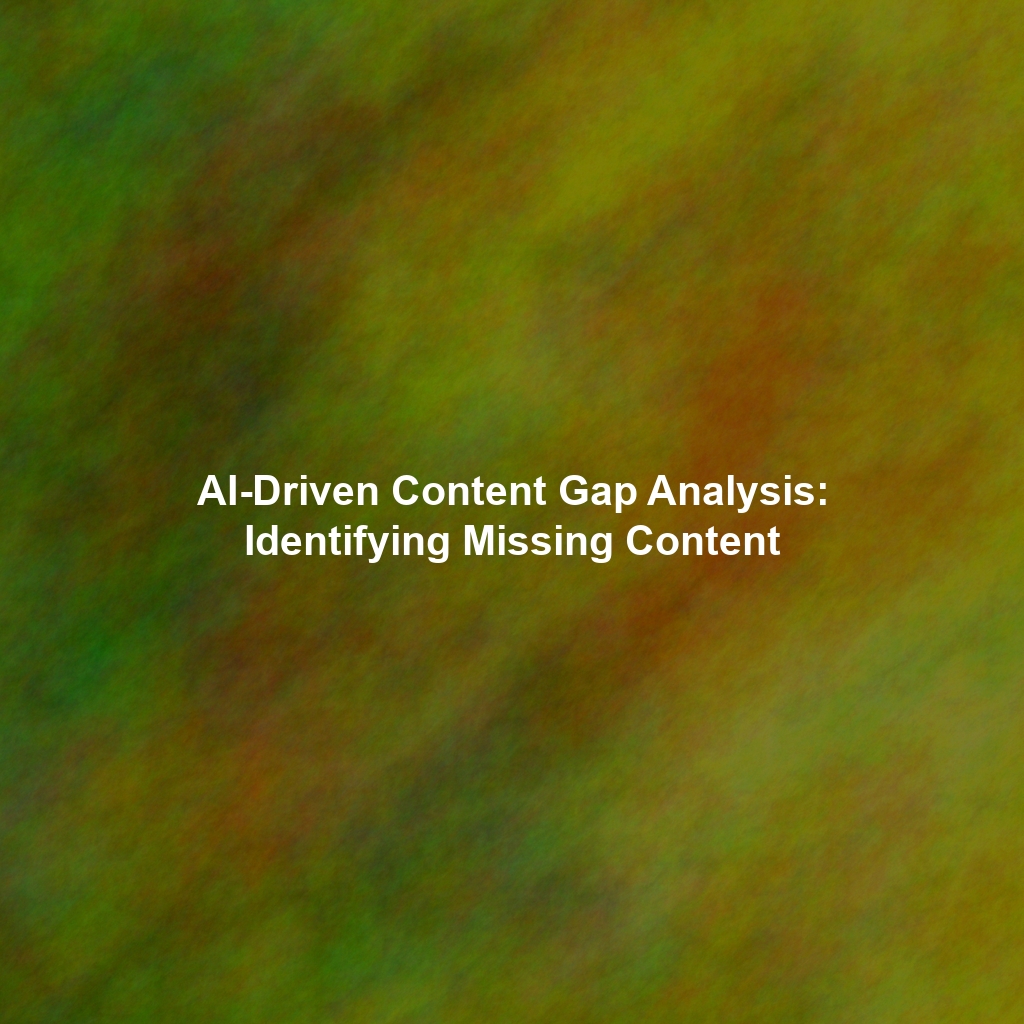Introduction: The Dawn of Personalized Content with AI
This article delves into the world of AI-powered content personalization, exploring its core principles, benefits, and practical strategies for implementation. We’ll uncover how machine learning algorithms can analyze user data to predict preferences, tailor content formats, and optimize delivery channels for maximum impact. Prepare to unlock the potential of AI and transform your content marketing from a broadcast approach to a highly personalized, customer-centric journey.
Understanding the Fundamentals of AI-Driven Personalization
At its heart, AI-driven content personalization leverages the power of artificial intelligence to understand individual user needs and preferences, and then tailor content accordingly. This involves several key components:
Data Collection and Analysis: The Foundation of Personalization
The first step is gathering comprehensive data about your audience. This includes:
- Demographic data: Age, location, gender, education, income.
- Behavioral data: Website activity, purchase history, email engagement, social media interactions.
- Psychographic data: Interests, values, lifestyle, motivations.
AI algorithms, specifically machine learning models, analyze this data to identify patterns and segments within your audience. This analysis goes beyond simple demographics, uncovering hidden correlations and nuanced preferences that would be impossible to detect manually. Advanced AI can predict future behavior based on past actions, enabling proactive personalization strategies.
Machine Learning Algorithms: The Engine of Personalization
Machine learning algorithms are the workhorses behind AI-driven personalization. They learn from the data, adapting and improving their predictions over time. Common algorithms used in content personalization include:
- Collaborative Filtering: Recommends content based on the preferences of similar users. Think “customers who bought this also bought…”
- Content-Based Filtering: Recommends content similar to what a user has previously interacted with.
- Natural Language Processing (NLP): Analyzes the text of content to understand its topic, sentiment, and style, enabling more precise matching with user preferences.
- Predictive Analytics: Forecasts future user behavior based on historical data, allowing for proactive content delivery.
Content Tagging and Metadata: Organizing for Personalization
To effectively personalize content, it needs to be properly tagged and categorized with relevant metadata. This allows AI algorithms to understand the content’s subject matter, tone, and target audience. Accurate tagging ensures that the right content is delivered to the right user based on their identified preferences.
Benefits of Implementing AI-Driven Content Personalization
The advantages of embracing AI-driven content personalization are significant and far-reaching:
- Increased Engagement: Personalized content resonates more deeply with users, leading to higher click-through rates, time spent on page, and social sharing.
- Improved Customer Experience: Delivering relevant and valuable content enhances the overall customer experience, fostering loyalty and advocacy.
- Higher Conversion Rates: By presenting users with content tailored to their specific needs and interests, you increase the likelihood of conversion, whether it’s a purchase, sign-up, or download.
- Enhanced ROI: Personalized content marketing campaigns are more efficient and effective, resulting in a higher return on investment.
- Deeper Customer Insights: AI-powered analytics provide valuable insights into customer behavior and preferences, enabling you to refine your content strategy and improve your overall marketing efforts.
- Stronger Brand Loyalty: By consistently delivering valuable and personalized experiences, you build stronger relationships with your customers and foster brand loyalty.
Practical Strategies for AI-Driven Content Personalization
Now, let’s explore some actionable strategies for implementing AI-driven content personalization in your marketing efforts:
Personalized Website Experiences
Tailor your website content based on user behavior and demographics. This can include:
- Dynamic Content: Display different headlines, images, and calls to action based on user segments.
- Personalized Product Recommendations: Suggest products or services based on past purchases and browsing history.
- Personalized Landing Pages: Create landing pages tailored to specific audience segments, with messaging and offers that resonate with their needs.
- AI-powered Chatbots: Use chatbots to provide personalized support and guidance based on user queries and browsing behavior.
Personalized Email Marketing
Segment your email list and send targeted messages based on user preferences and behavior. This includes:
- Personalized Subject Lines: Use the recipient’s name or reference their interests in the subject line to increase open rates.
- Dynamic Content in Emails: Display different content blocks based on user segments, such as product recommendations, offers, or relevant articles.
- Behavioral Email Triggers: Send automated emails based on user actions, such as abandoned carts, website visits, or email engagement.
- Personalized Email Cadence: Adjust the frequency and timing of emails based on user engagement levels.
Personalized Social Media Marketing
Use AI-powered tools to target social media ads and content based on user interests and demographics. This includes:
- Targeted Advertising: Leverage social media advertising platforms to target specific audience segments with personalized ads.
- Personalized Content Recommendations: Use AI-powered tools to recommend relevant content to users based on their social media activity.
- Influencer Marketing: Partner with influencers who align with specific audience segments to create authentic and engaging content.
- AI-powered Sentiment Analysis: Monitor social media conversations to understand brand sentiment and identify opportunities for personalized engagement.
Personalized Content Recommendations Across Platforms
Implement content recommendation engines on your website, blog, and mobile app to suggest relevant articles, videos, and other content based on user preferences.
- “Recommended for You” Sections: Display personalized content recommendations based on user browsing history and preferences.
- Related Content Suggestions: Suggest related articles or videos at the end of each piece of content.
- Personalized Search Results: Customize search results based on user preferences and past searches.
Overcoming Challenges in Implementing AI Personalization
While the potential of AI-driven content personalization is immense, implementing it effectively can present certain challenges:
- Data Privacy Concerns: Ensuring data privacy and security is paramount when collecting and analyzing user data. Transparency and compliance with regulations like GDPR are crucial.
- Data Quality and Accuracy: The accuracy and reliability of your data directly impact the effectiveness of your personalization efforts. Data cleansing and validation are essential.
- Algorithm Bias: AI algorithms can inherit biases from the data they are trained on, leading to unfair or discriminatory outcomes. Addressing and mitigating bias is crucial.
- Integration Complexity: Integrating AI-powered personalization tools with existing marketing systems can be complex and require technical expertise.
- Cost of Implementation: Implementing AI-driven personalization solutions can require significant investment in technology, infrastructure, and expertise.
Addressing these challenges requires a strategic approach that prioritizes data privacy, quality, and ethical considerations. Careful planning, ongoing monitoring, and a commitment to continuous improvement are essential for successful implementation.
The Future of AI in Content Personalization
The future of AI in content personalization is bright, with advancements in technology promising even more sophisticated and effective strategies. We can expect to see:
- Hyper-Personalization: Moving beyond segmentation to deliver truly one-to-one personalized experiences based on real-time user behavior.
- AI-Powered Content Creation: AI algorithms that can generate personalized content variations based on user preferences, automating content creation at scale.
- Predictive Content Optimization: AI that can predict the performance of different content variations and automatically optimize content for maximum impact.
- Voice-Based Personalization: Tailoring content and recommendations for voice assistants and smart speakers based on user voice patterns and preferences.
- Augmented Reality (AR) and Virtual Reality (VR) Personalization: Creating immersive and personalized experiences in AR and VR environments.
As AI technology continues to evolve, content marketers will have access to even more powerful tools to connect with their audience on a deeper and more meaningful level. Embracing these advancements will be crucial for staying ahead of the curve and delivering exceptional customer experiences.
Conclusion: Embracing the Personalized Future of Content Marketing
AI-driven content personalization is no longer a futuristic concept; it’s a present-day reality that is transforming the way businesses connect with their audience. By leveraging the power of artificial intelligence, marketers can create highly personalized experiences that resonate with individual users, driving engagement, loyalty, and conversion.
While challenges exist, the benefits of implementing AI-driven personalization far outweigh the risks. By prioritizing data privacy, ensuring data quality, and embracing ethical considerations, businesses can unlock the full potential of AI and create a more personalized, customer-centric content marketing strategy. As AI technology continues to evolve, embracing these advancements will be crucial for staying competitive and delivering exceptional customer experiences in the years to come. The future of content marketing is personalized, and AI is the key to unlocking it.
 Skip to content
Skip to content

